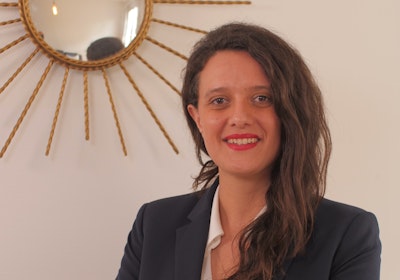Interview with Vanessa Vidot, Wit Art
Can you introduce Wit Art services and their interests for collectors?
Vanessa Vidot: Wit Art offers a new proposal for managing, digitization and enhancing private collections, adapted to the needs of collectors and for their benefit. Wit Art plays a part in the digital transition of the art market by allowing the digital referencing of works of art. Wit Art relies on SaaS software (Software as a Service) specifically designed to facilitate asset management for art collectors. It enables collectors to value their collections, control their financial assets and contribute to cultural life by promoting their works of art through the museum or institutional loans. The software developed by Wit Art allows collectors to consult and manage the administrative side of their collection, as well as present the artworks while having the possibility of hiding part of the inventory. It is a convenient tool for management and description but also promotes collectables. The software is a complex and flexible system which adapts to everyone's needs and profile of collectors. Wit Art, therefore, provides individual support based on my professional know-how. Indeed, before founding Wit Art in 2017, I was a specialist in Modern Art, running a Modern Art gallery specialising in the secondary market in Paris for ten years.
"The constitution of an art collection relies, first and foremost, on a passion built over time. The notion of durability is a fundamental component of the art market". Vanessa Vidot
Who are commonly the collectors you supervise, and what are their collections?
VV: The constitution of an art collection relies, first and foremost, on a passion built over time. The notion of durability is a fundamental component of the art market. Private collections evolve throughout collectors' lives and represent an average of 40 years of purchasing policies. However, the management and valuation of these acquisitions are still widely underestimated issues today. Collectors are mainly supported by market professionals when purchasing and/or reselling. However, art market professionals have not considered inventory, knowledge and relocation of works until recently. First and second-market collectors are mostly aged 50 or over. A new profile of collectors is emerging: millennials, 35% of whom have more than 30% of their heritage made up of works of art, with the highest level of spending across all mediums, including digital art, with an average of $20,000 in the first six months of 2021. Their digital practices bring a new dynamic and transfigure the relationship to the work and its display, thus creating a need in the software management sector. The art market is today in full mutation, boosted by post-Covid digitization and by a new generation of collectors who compromise through their new practices while following in the footsteps of historical collectors who ensure the continuity of the traditional form of the collection as we know it. As a private individual, the collector does not have the tools to enhance his collection, whether in macro or micro-management. The information related to collectables is often hand-managed. Although there are as many collection profiles as there are collectors, we can distinguish three main types of private collections:
• The first: a collection transmitted by inheritance to the current owners and generally increased by purchases from the latter;
• The second: a collection created spontaneously by enthusiasts which constitutes both an artistic and financial heritage but also a social status;
• The third and last: a collection of artists' heirs, the rights holders, who inherit the physical work and generally the moral rights linked to the artist.
In all three cases, the owners of the works are mostly, if not entirely, foreign to the art market and have no idea how to manage this heritage. Traditionally, the owner of a work possesses the work physically, and in the best case, a title deed corresponds to it. In addition, the identification elements are often neither known nor listed by the owner of the works. And if they are, it is only in paper form, which is an issue for accessing the information.Today, I support collectors who correspond to the profile sets above. There are mainly Modern and Contemporary Art collectors, with sometimes emerging artists.
We are living in a pivotal time: after the health crisis, war on our doorstep, inflation... how would you describe the financial wealth of collectors?
VV: In recent history, we all remember the art market crisis of the mid-1970s, the early 1990s and 2008-2009. Likewise all markets, the art market is relatively affected by the current situation, but the digital revolution far more matters. The art market is specific and mainly driven by individuals whose worth represents over 65 billion dollars in 2021. In times of crisis, masterpieces and great masters appear as safe-haven assets to diversify investment portfolios. Meanwhile, works of actual but less significant interest may be affected. The economic crisis has a differentiated impact depending on the typology of the collectables. The art market is also undergoing a profound change linked to the revolution in new technologies in a global market where more and more transactions are carried out remotely in real-time. The art market is dynamic, and each player is actively involved in its development. I think the discount is crucial for art market professionals to secure their position while considering purchasing policies in the long term and taking into account economic fluctuations without drastically imputing market dynamics.
What queries must be asked before buying a work of art? Passion, investment or both?
How do we separate the two? When you buy artwork and decide to live with artwork, your life becomes richer on all levels. From a strictly financial point of view, the figures for art gallery auctions and sales are crystal clear. It is important to remember that acquiring a work of art is a passion and a financial asset. The purchase of artwork, therefore, acts at different levels. The creation and sustainability of a collection constitute a financial legacy and are intrinsically bound to the proper management of that collection. Today managing your artistic heritage must be integrated into a more comprehensive management policy of a personal or family legacy, and this is in response to these issues that I launched Wit Art.

